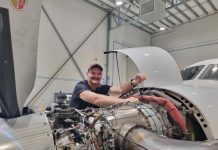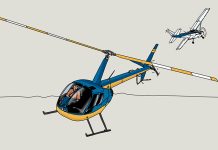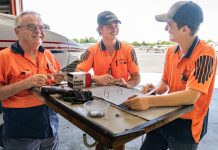The crash which killed a Premier League football club owner and 4 others was due to a catastrophic failure of the tail rotor pitch control mechanism that made effective control of the helicopter impossible, the official investigation has found.
The UK Air Accidents Investigation Board yesterday issued its report into the crash of the Leonardo Helicopters (formerly AgustaWestland) AW169 on 27 October 2018 at King Power stadium in the English city of Leicester.
Leicester City Football Club owner Vichai Srivaddhanaprabha, was killed, along with executives Nusara Suknamai and Kaveporn Punpare, pilot Eric Swaffer and trainee helicopter pilot Izabela Lechowicz.
The report summarises the accident sequence after the helicopter lifted off from the centre of the stadium’s football pitch.
Passing through a height of approximately 250 ft, the pilot began the transition to forward flight by pitching the helicopter nose down and the landing gear was retracted. The helicopter was briefly established in a right turn before an increasing right yaw rapidly developed, despite immediate application of corrective control inputs from the pilot. The helicopter reached a radio altimeter height of approximately 430 ft before descending with a high rotation rate.
At approximately 75 ft from the ground the collective was fully raised to cushion the touchdown. The helicopter struck the ground on a stepped concrete surface, coming to rest on its left side. The impact, which likely exceeded the helicopter’s design requirements, damaged the lower fuselage and the helicopter’s fuel tanks which resulted in a significant fuel leak. The fuel ignited shortly after the helicopter came to rest and an intense post-impact fire rapidly engulfed the fuselage.
The inquiry found there had been a seizure of the tail rotor duplex bearing that initiated a further sequence of failures in the tail rotor pitch control mechanism. The seized bearing locked to a control shaft and unscrewed it. This resulted in the unrecoverable loss of control of the tail rotor blade pitch angle and the blades moving to their physical limit of travel, which caused the helicopter to rotate rapidly and uncontrollably to the right.
The pilot’s application of full left pedal in under a second had no effect because of the nature of the failure. The duplex bearing was required to be inspected every 400 hours, but the near new aircraft had a total flight time of 330.9 hours. It had undergone a biweekly check the day before.
The inquiry found there was no procedure to respond to tail rotor pitch control runaway (as opposed to loss of tail rotor effectiveness) because this was considered a catastrophic failure for which no procedure could be designed. Investigators simulated the crash but found, ’None of the trial profiles ended with a controlled landing below the simulator’s crash detection threshold.’
Simulations found no audio warnings or display cues that might have alerted the pilot to the tail rotor pitch control runaway.
Since the accident, Leonardo Helicopters has issued 16 Service Bulletins and EASA has published 9 Airworthiness Directives for AW169 and AW189 helicopters. The AAIB has made additional recommendations about certification of large helicopters.
Details of the tail rotor bearing failure can be found in the AAIB report.




